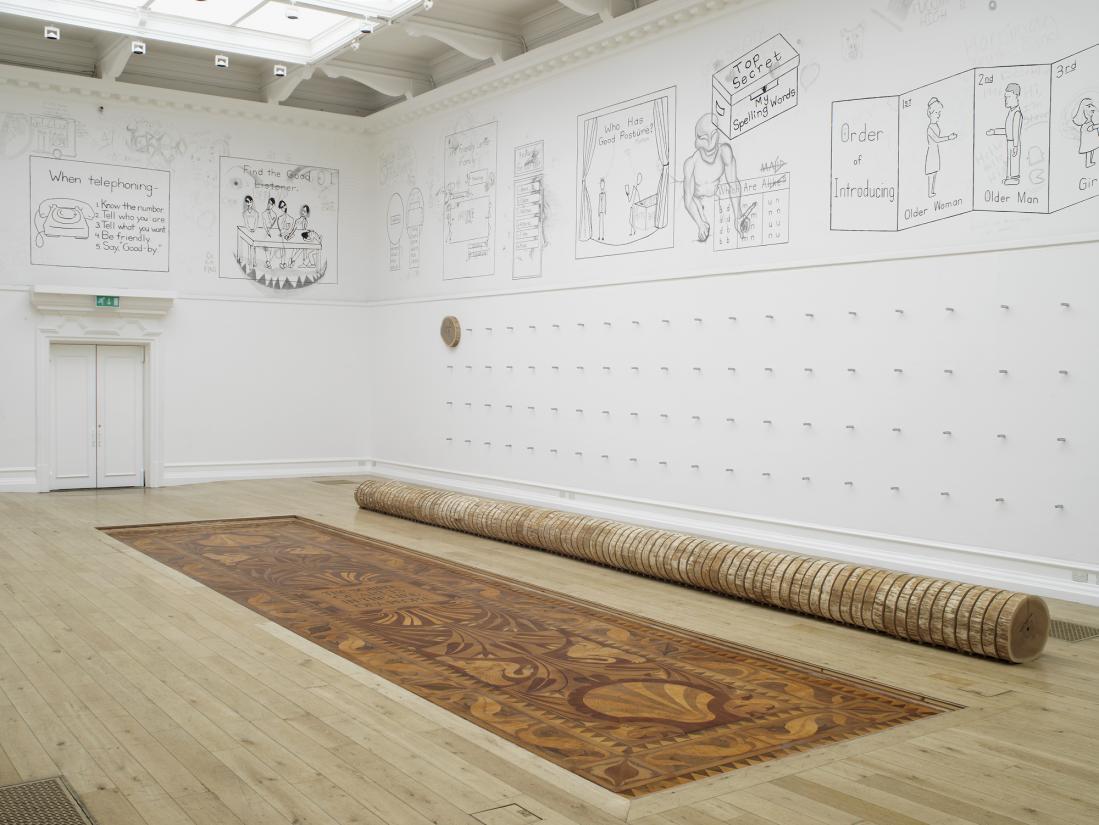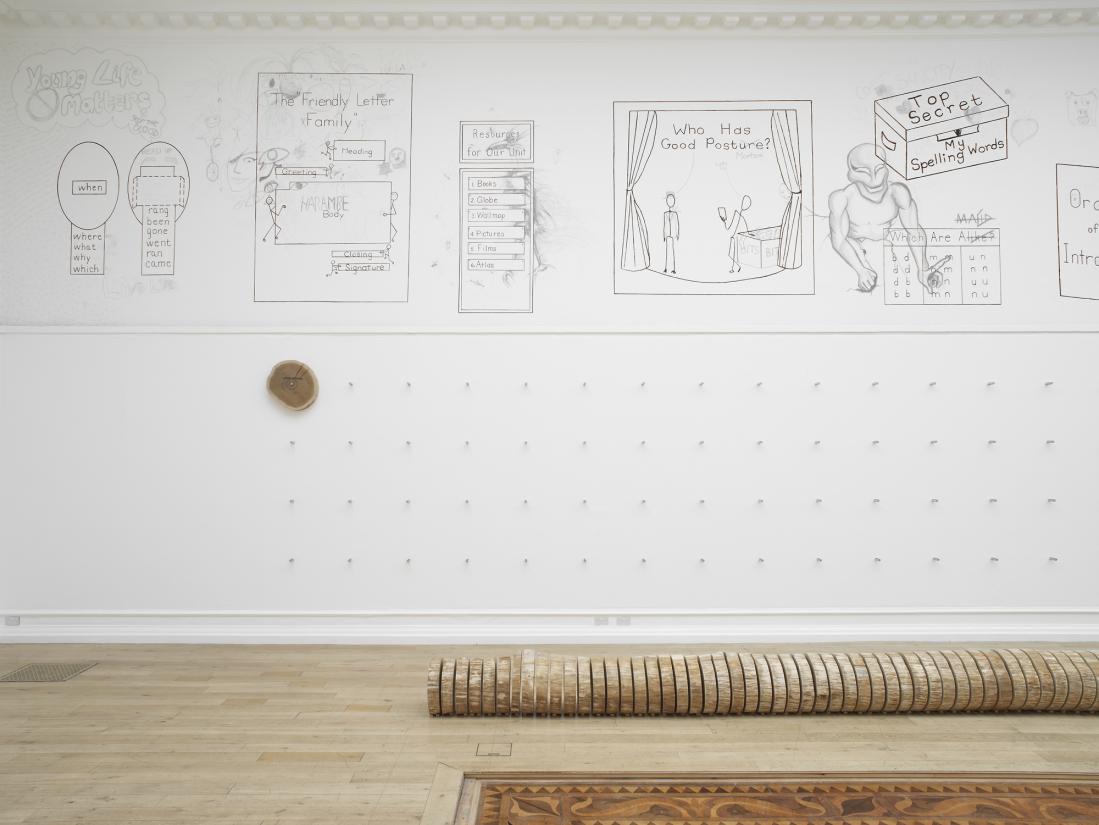The piece consists of a 100-year-old oak tree from the area in Slovakia where Ondak grew up. The trunk has been sliced into 100 discs, each disc stamped with a historical event related to a highlighted growth ring. In this manner, the tree represents 100 selected historical events between 1917 and 2016, including the Russian Revolution, World War I, the publishing of Hitler’s Mein Kampf (My Struggle), the first moon landing and so forth. The events also reflect Ondak’s own personal mythology.
Bold focus
The Kunsten art museum was early to notice Ondak’s innovative practice and staged a solo exhibition of his work in 2017. In connection with the purchase of Event Horizon, the chairwoman of the New Carlsberg Foundation, Christine Buhl Andersen, says:
‘Over the past 10 years, Kunsten has had a bold focus on slightly demanding and experimental works in their purchasing policy for contemporary art. The New Carlsberg Foundation has seen it as important to support this bold stance, which has helped secure the presence of trend-setting international conceptual art in the Danish museum scene. Roman Ondak’s work is no exception: a sort of modern, conceptual history book, manifested in one of the oldest materials of art. Simultaneously simple and thought-provoking, imaginative and deeply serious.’
Past and present
Every day, a new disc from the oak tree is taken from the floor and hung on the wall where the discs form a sort of imaginary calendar. After 100 days, the process starts over, and thus, the artwork is in a constant state of process. The viewer is confronted with nature’s way of recording time. We see all the growth rings in a tree that has witnessed 100 years’ history. The work engenders dialogue across time and place, sparking reflections about how knowledge is passed on from one generation to the next.
The piece is on display in the exhibition Landskab (Landscape) at Kunsten Museum of Modern Art Aalborg from 24 June 2020.
About Roman Ondak
Roman Ondak (b. 1966) grew up during the Corld War in former communist Czechoslovakia. He represented Slovakia at the Venice Biennale in 2009 and has exhibited in leading museums and galleries, including TATE in London, Centre Pompidou in Paris and MoMA in New York, and participated in biennales around the world. In his artistic practice Ondak can be seen as a standard bearer for a more narrative approach to conceptual art.




